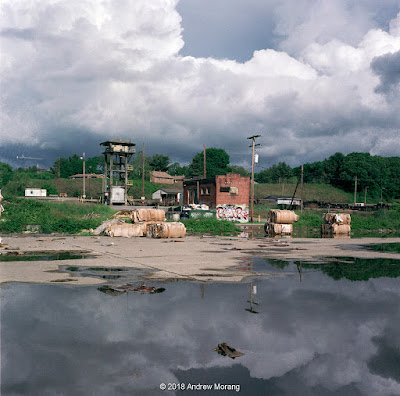 |
| Foundy Street, River Arts District, Asheville, North Carolina. |
Asheville is the largest city in western North Carolina. The site was first settled in 1784, and the town has a long pioneer and minor Civil War history. Being in the foothills of the Blue Ridge Mountains, the beautiful setting attracted wealthy tourists during the Gilded Age of the 1880s. George Washington Vanderbilt II, youngest son of William Henry Vanderbilt, fell in love with the mountains and began construction of his monumental mansion, the Biltmore House, on the Biltmore Estate in 1889. Many visitors associate Asheville with the Biltmore, but the town also has an industrial past and some magnificent Art Deco architecture. Many of the warehouses and factories (including a tannery) were concentrated along the railroad line and the French Broad River.
Today, the old warehouses have become the nexus of the River Arts District. From the official web page:
"The River Arts District consists of a vast array of artists and working studios in 22 former industrial and historical buildings spread out along a one mile stretch of the French Broad River. This eclectic area is an exciting exploration of arts, food and exercise. Plan on spending a day or more visiting artists working in their studios, grabbing a bite of local cuisine or a brew and taking time to find art that's perfect for your world. "I spent a few days in Asheville while attending The Vintage car rally and show. The weather had been variable, with some terrific downpours. One afternoon, a scavenger hunt was scheduled to start and end in the River Arts District, whose existence was totally new to me. I was too late to participate on the hunt, but the old warehouses and studios were too tempting to resist.
 |
| Electrical junction building, Old Lyman Street, Asheville. |


















































